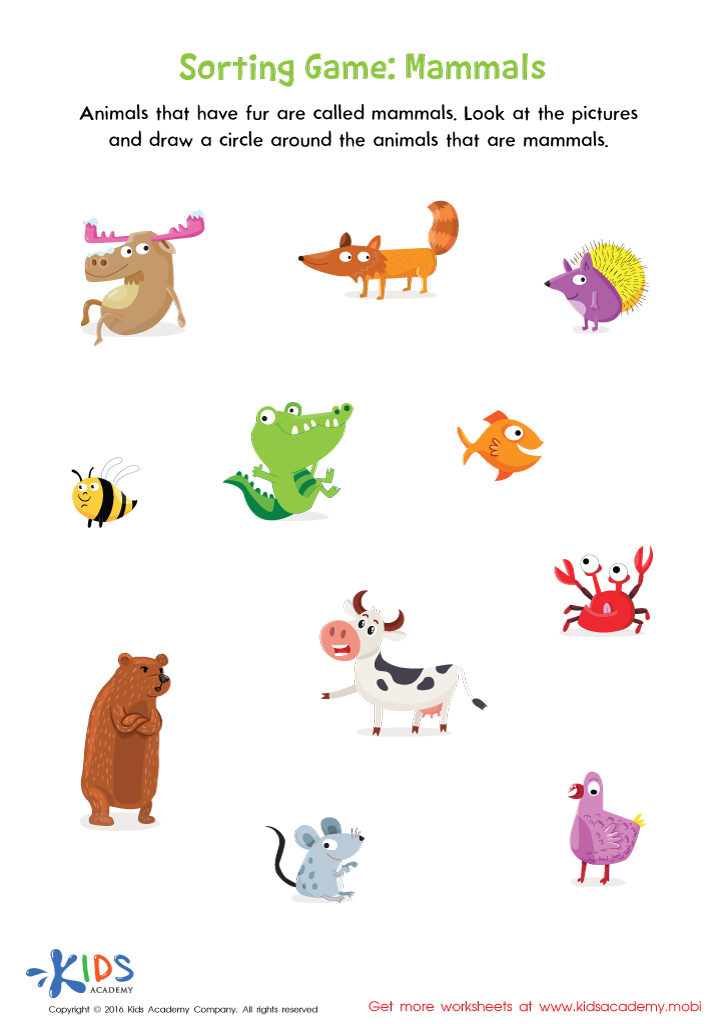Identify mammals Worksheets for Kids
1 filtered results
-
From - To


Mammals Sorting Worksheet
Question/Answer
How to train the Identify mammals skill in Preschool students learning about Plants and Animals?
To train the Identify Mammals skill in Preschool students, start by introducing them to simple, clear pictures of common mammals such as cats, dogs, and cows. Use interactive activities like matching games, where they match pictures of mammals to their names or habitats.
How does the mastery of the Identify mammals skill affect a student's performance at an early age?
Mastering the Identify mammals skill at an early age can significantly enhance a student's observational skills, cognitive development, and categorization abilities. It fosters curiosity about the natural world, improves vocabulary related to animals, and sets a foundation for scientific understanding and environmental awareness.
Why is the Identify mammals skill important for Preschool students?
The Identify mammals skill is important for Preschool students because it lays the foundation for basic biological science concepts, enhances their observation skills, helps in language development by expanding their vocabulary, and encourages curiosity about the natural world. Early exposure to this skill fosters a deeper understanding and appreciation of wildlife and ecosystems as they continue to learn and grow.
 Assign to the classroom
Assign to the classroom




.jpg)







